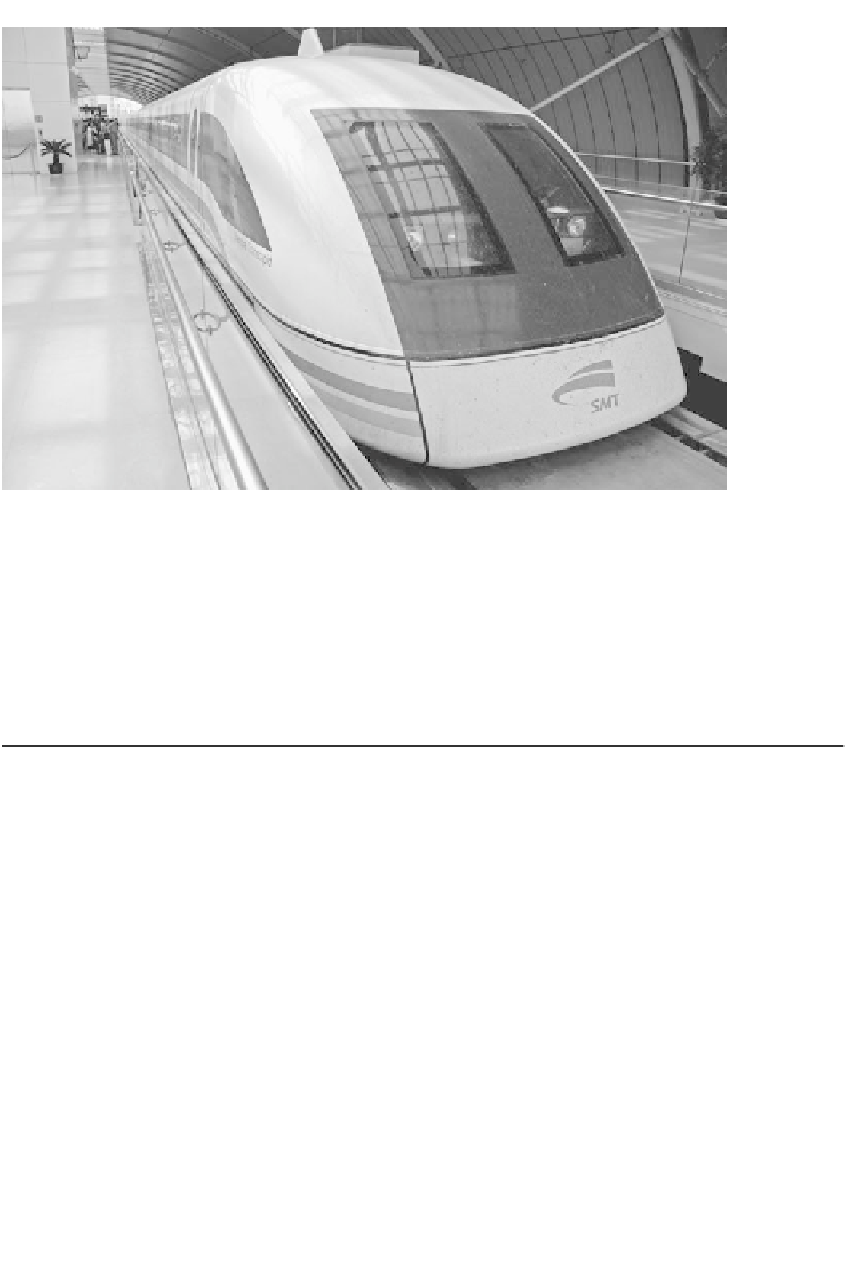Environmental Engineering Reference
In-Depth Information
Figure 6.33
Maglev. Similarly, some public transport investments can be poorly targeted,
sometimes as 'prestige' projects. The Maglev (Magnetic Levitation) airport
connection in Shanghai was built in 2004 at a cost of US$1.2 billion for just 33
km of line. It runs at around a fifth full, requires large operating subsidies in spite
of a high fare (US$6 one way), and has virtually no practical use for daily travel
in Shanghai (Pucher et al., 2007). Transport investment needs to be much more
carefully planned, with a consideration of the effectiveness of spending across
modes relative to likely societal impact.
Table 6.10
Summary scenario metrics
Baseline
Car
Bus
All
2005 (tonnes CO2)
524,900
345,100
1,423,300
2005 per capita
0.08
0.05
0.22
(tonne CO2/person)
2010 motorisation
72 vehicles/1,000 population
2005 car gCO2/km
178
2010 mode share,
Car
Bus
NMT
distance (km)
11%
16%
48%
2030 Projection
Scenario 1: High Motorisation
Scenario 4: Good Intentions
Car
Bus
All
Car
Bus
All
2030 (tonnes CO2)
15,212,371
259,621
16,272,995
1,835,418
1,277,284
4,472,381
2030 per capita
1.85
0.03
1.98
0.22
0.16
0.54
(tonne CO2/person)
2030 motorisation
590 vehicles/1,000 population
244 vehicles/1,000 population
2030 car gCO2/km
139
92
2030 mode share,
Car
Bus
NMT
Car
Bus
NMT
distance (km)
85%
3%
3%
38%
20%
38%





